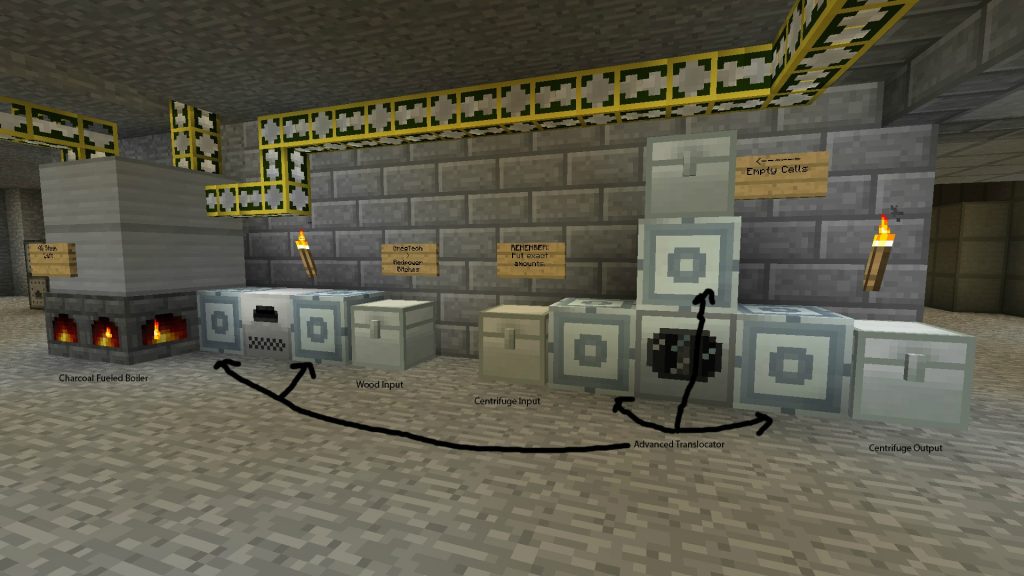GregTech is often thought of as one of the most complex and fun modpacks in Minecraft’s modding world.
It focuses on being realistic, having detailed crafting systems, and making things in many steps. Players often find themselves on a hard but satisfying adventure.
This article looks at how to progress through Medium Voltage (MV) in GregTech.
By the end of this guide, you should clearly understand how to go from basic resources to advanced integrated circuits. Let’s get started –
The Core Objective of Medium Voltage Progression
The main purpose of Medium Voltage is to move from good electronic parts to better combined parts.
At this point, you’ll need different things: round flat pieces, combined part chips (IC chips), a gray material, small electronic switches, and more.
But, the hardest part is making the small electronic switches. This needs both high-tech machines and carefully made materials like thin tin wire, liquid plastic, and flat gray material pieces.
This guide will explain each important step to make it easier for you.
Step 1: Getting Good at Liquid Polyethylene Production
Liquid polyethylene is vital for making transistors and several components in medium voltage recipes. Here’s how to produce it:
- Start with Biomass Production
- Place potatoes (or similar organic items) into an advanced brewery to create biomass.
- Biomass, a foundational material, prepares you for the chemical reactions that follow.
- Convert Biomass into Phenol
- Transport the biomass into an advanced distillery. This process yields two products: wood pulp (a byproduct) and phenol.
- Create Epoxy from Phenol and Sulfuric Acid
- Combine phenol with sulfuric acid in an advanced chemical reactor.
- Note that to transport sulfuric acid safely, you’ll need strong pipes made of vanadium steel.
- Vanadium steel is crafted by mixing chromium, vanadium, and steel dust in an electric blast furnace (EBF).
- Produce Ethylene
- The chemical reaction creates ethylene, alongside diluted sulfuric acid as a byproduct.
- Handle diluted sulfuric acid using item filters and electric fluid pumps. For example, you can void excess diluted sulfuric acid using Super Tank 1 with a whitelist filter set specifically for acid.
- Synthesize Liquid Polyethylene
- Send the ethylene into another advanced chemical reactor, add oxygen, and the result is liquid polyethylene.
- Solidify Polyethylene for Further Use (Optional)
- Use your liquid polyethylene to craft specific components (pipes for machines, casing, etc.). This can be done in simple machinery or stored depending on your immediate needs.
Step 2: Producing Silicon Plates
Silicon plates are another thing you need for small electronic switches.
The process of making silicon and the things that come from it can seem scary, but the steps are easier than they look:
- Source Silicon Dioxide
- Obtain silicon dioxide through one of several methods:
- Centrifuge coal to extract carbon and silicon dioxide.
- Ore washing Soapstone ore for a 14% chance to acquire silicon dioxide dust.
- Centrifuge redstone dust to get silicon in small quantities (10 redstone dust = 1 silicon dust).
- Obtain silicon dioxide through one of several methods:
- Create Hot Silicon
- Mix carbon dust and silicon dioxide in an electric blast furnace (EBF) to produce hot silicon.
- Note that when crafting hot ingots like hot silicon, you’ll need Kanthal coils in your EBF, which requires a high voltage upgrade (more on this below).
- Cool Down Hot Silicon
- Use a chemical bath to cool down the hot silicon with water, transforming it into usable silicon.
- Cut Silicon Plates
- Once you’ve produced silicon ingots, use a cutting machine with water or lubricant to slice them into silicon plates.
Step 3: Upgrading to High Voltage (HV)
While working in Medium Voltage, you’ll often need to make your machines better for High Voltage (HV) for certain hard recipes (like making special coils or working with advanced materials).
Here’s an easy way to do this:
- Craft Medium Voltage Energy Hatches
- Combine two medium voltage (MV) energy hatches in your EBF to create one high voltage (HV) energy hatch.
- Energy hatches are crucial for upgrading your blast furnace to meet the power needs of HV recipes.
- Prepare for Upgraded Materials Like Kanthal Coils
- To craft the necessary Kanthal coils:
- Melt Kanthal ingots in your EBF to produce hot Kanthal.
- Cool the hot Kanthal in a chemical bath.
- Replace your existing Cupronickel coils with Kanthal coils for medium- and high-temperature recipes.
- To craft the necessary Kanthal coils:
Step 4: Transistors – The Keystone of Progression

Once you’ve set up liquid polyethylene and silicon plates, you’re equipped to craft transistors. This is relatively straightforward now:
- Use an assembler to combine:
- Fine tin wire
- Silicon plates
- Liquid polyethylene
Step 5: Advanced Integrated Circuits
With transistors crafted, you can now tackle Advanced Integrated Circuits — the final goal of Medium Voltage. These are made from a combination of:
- RAM chips (produced using wafers and cutting machines).
- IC chips (crafted similarly to transistors using wafers).
- Good integrated circuits (from earlier progression stages).
Other Key Components:
- Fine Electrum Wire
- Combine silver and gold in an alloy smelter to produce Electrum, then process it into fine wire.
- Annealed Copper
- Use an arc furnace to smelt plain copper with oxygen, resulting in annealed copper.
Assembling these components together in an Advanced Assembler will create your highly-coveted Advanced Integrated Circuits.
Efficient Machine Filtering and Automation

One of the standout tips is the importance of item management using filters, robot arms, and electric pumps. Here’s a quick rundown on how to efficiently filter and automate items and fluids:
- Robot Arms for Solid Items
- Use a robot arm as a ‘cover’ on machines to manage inputs and outputs.
- Attach an item filter to specify which items are sent or received. For instance, whitelist clay dust to ensure only clay enters a machine.
- Electric Pumps for Fluids
- For moving fluids (e.g., sulfuric acid, ethylene), use electric pumps, which function similarly to robot arms but for liquids.
- Fluid sloshing can occur if not properly filtered, so always set whitelist filters for specific fluids to avoid output issues.
- Super Tank for Voiding Byproducts
- A Super Tank 1 is invaluable for managing surplus fluids like diluted sulfuric acid. When full, it automatically voids excess fluid, preventing machines from clogging.
- To craft a Super Tank, you’ll need hermetic casings, which require liquid polyethylene for their assembly.
Wrapping Up: The Leap into High Voltage
With Advanced Integrated Circuits in hand, you’ll be well-prepared for High Voltage progression in this Minecraft Mod. While the MV stage of GregTech’s progression might feel overwhelming at times, careful planning, efficient automation, and an understanding of the necessary workflows will make it a manageable and even enjoyable phase.
Mastering MV in GregTech is a big achievement in your journey through this incredibly detailed modpack.
Not only does it teach you complex crafting mechanics, but it also sets a foundation for tackling future challenges in High Voltage and beyond.
Be sure to pace yourself, experiment with alternative crafting methods, and always take advantage of the flexibility GregTech offers in resource production.




